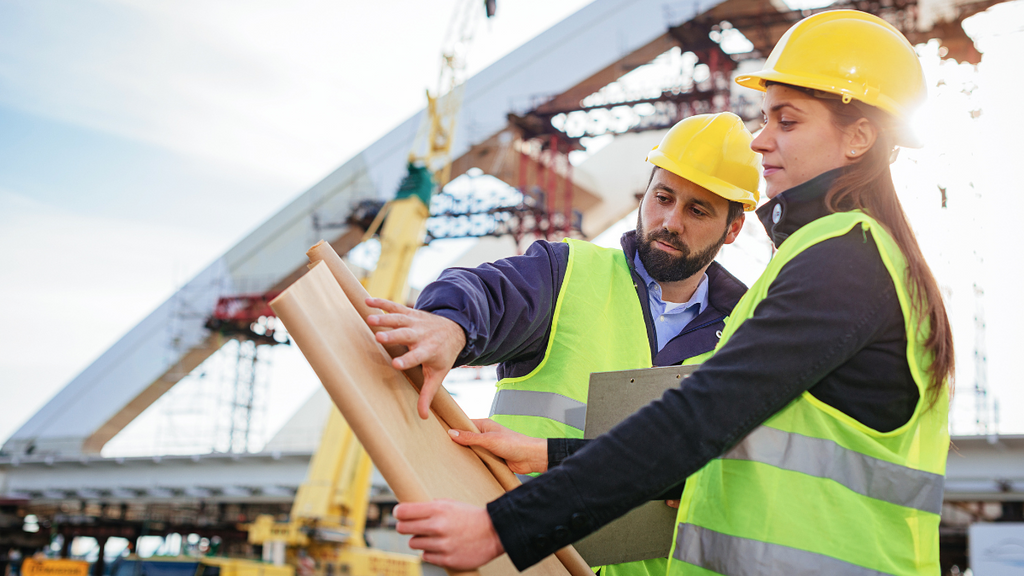The Geotheta Statements
The Geotheta Statements
Blog Article
The 25-Second Trick For Geotheta
Table of ContentsNot known Facts About GeothetaThe Best Guide To GeothetaWhat Does Geotheta Do?Examine This Report about GeothetaSome Ideas on Geotheta You Should Know

They perform website investigations, gather examples, do lab examinations, and assess data to evaluate the suitability of the ground for building and construction jobs - Tailings Engineer. Based upon their searchings for, geotechnical designers provide suggestions for foundation style, incline security, preserving frameworks, and mitigation of geotechnical hazards. They collaborate with other specialists, such as designers, structural designers, and building and construction groups, to make sure that geotechnical considerations are integrated right into the overall job layout and application
By assessing the behavior and residential or commercial properties of dirt and rock, they can identify possible geotechnical dangers such as landslides, dirt negotiation, or slope instability. Their experience aids protect against failures or mishaps that could jeopardize lives and property. Right here are some detailed duties and responsibilities of a geotechnical designer: Site Investigation: Geotechnical engineers conduct site examinations to gather information on subsurface conditions.
They interpret the data to understand the residential properties and behavior of the soil and rock, including their toughness, leaks in the structure, compaction qualities, and groundwater problems. Geotechnical Evaluation and Style: Geotechnical designers assess the information accumulated during site examinations to assess the security and viability of the site for building tasks. They execute geotechnical computations and modeling to evaluate variables such as birthing capability, negotiation, incline security, lateral planet stress, and groundwater flow.
The 6-Minute Rule for Geotheta
Structure Style: Geotechnical engineers play a vital duty in making foundations that can safely sustain the desired framework. They analyze the soil problems and tons needs to identify the proper structure kind, such as shallow structures (e.g., grounds), deep foundations (e.g (https://www.anyflip.com/homepage/zuylo)., heaps), or specialized methods like soil improvement. They take into consideration elements such as negotiation restrictions, birthing capability, and soil-structure communication to develop optimum structure styles
They assess building strategies, screen site tasks, and carry out field examinations to verify that the style recommendations are complied with. If unexpected geotechnical issues develop, they analyze the circumstance and offer suggestions for removal or changes to the style. Risk Analysis and Reduction: Geotechnical engineers assess geotechnical dangers and threats connected with the project website, such as landslides, liquefaction, or soil disintegration.

Cooperation and Communication: Geotechnical engineers function closely with other professionals associated with a job, such as designers, architectural engineers, and building and construction groups. Reliable interaction and partnership are vital to incorporate geotechnical considerations right into the total task style and construction process. Geotechnical engineers offer technological competence, solution inquiries, and make certain that geotechnical requirements are met.
Getting My Geotheta To Work
Right here are some kinds of geotechnical engineers: Foundation Engineer: Foundation engineers concentrate on designing and evaluating structures for frameworks. They analyze the soil conditions, tons demands, and website features to determine the most suitable foundation type and style, such as superficial structures, deep structures, or specialized strategies like heap structures.
They review the variables affecting incline security, such as dirt properties, groundwater problems, and incline geometry, and create strategies to prevent slope failings and minimize risks. Earthquake Engineer: Quake designers focus on examining and creating structures to endure seismic forces. They analyze the seismic risk of a site, evaluate dirt liquefaction possibility, and establish seismic design criteria to ensure the safety and security and strength of structures during quakes.
They do field testing, accumulate examples, and evaluate the collected information to define the soil residential or commercial properties, geologic formations, and groundwater problems at a site. Geotechnical Instrumentation Engineer: Geotechnical instrumentation designers focus on monitoring and gauging the habits of soil, rock, and frameworks. They set up and preserve instrumentation systems that check aspects such as dirt negotiation, groundwater degrees, incline movements, and architectural displacements to assess performance and supply early cautions of possible issues.
Things about Geotheta
They perform examinations such as triaxial examinations, combination examinations, direct shear examinations, and permeability tests to collect data for geotechnical analysis and layout. Geosynthetics Designer: Geosynthetics engineers focus on the layout and application of geosynthetic materials, such as geotextiles, geogrids, and geomembranes. They utilize these products to boost soil stability, strengthen inclines, supply water drainage services, and control erosion.
They have a tendency to be investigatory people, which suggests they're intellectual, introspective, and curious. They are interested, systematic, logical, analytical, and rational. Some of them are likewise social, indicating they're kind, charitable, cooperative, client, caring, handy, compassionate, sensible, and pleasant. Does this seem like you? Take our totally free occupation examination to discover out if geotechnical designer is just one of your top profession matches.
In the office environment, geotechnical designers use specialized software application tools to carry out calculations, develop layouts, and evaluate data. They prepare records, testimonial project requirements, communicate with customers and staff member, and coordinate project tasks. The workplace setting provides a helpful setting for research, analysis, and cooperation with various other professionals associated with the job.
The 8-Minute Rule for Geotheta
They often see job websites to conduct website examinations, analyze geotechnical conditions, and collect information for analysis. These visits include taking a trip to different have a peek at these guys places, occasionally in remote or challenging surfaces. Geotechnical engineers might perform soil tasting, conduct examinations, and monitor building and construction tasks to guarantee that the geotechnical facets of the project are being executed appropriately.
Geotechnical engineers likewise work in specialized geotechnical labs. Geotechnical lab engineers work extensively in these atmospheres, managing screening devices, running instruments, and tape-recording data.
Report this page